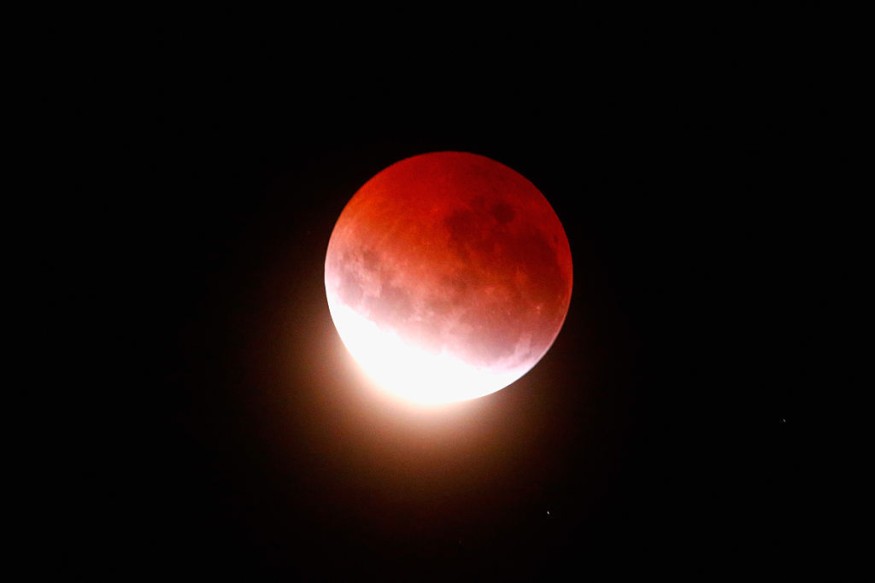This year has seen a slew of partial lunar eclipses. But still the century's longest one is on the horizon.
NASA said a three-hour and 28-minute partial lunar eclipse would occur on November 18 and 19, and people worldwide will be able to see it by just walking outside.
According to the space agency, the event will be visible between 2 to 4 a.m. ET on the east coast of the United States. Those on the west coast can see the phenomenon between 11 p.m. and 1 a.m. PT.
People across North and South America, Eastern Asia, Australia, and the Pacific Region will see the eclipse.

Partial Lunar Eclipse, Frost Moon: How and When to Watch
According to NASA, this month's full Moon, commonly known as the frost moon, will be accompanied by a partial lunar eclipse. Maine Farmer's Almanac (via the US Space Agency) said natives named the frost moon after the frost that happens after the fall season. Native American tribes coined the final full Moon of the season.
According to Inverse, there will be a complete lunar eclipse on May 16, 2022. Only two lunar eclipses will occur next year, with the second occurring on November 8, 2022. As the Moon travels away from the Earth by around 1.6 inches every year, lunar eclipses will become less common. However, it will take a long time for Earth's shadow to no longer cover the Moon's surface, so we still have billions of years of lunar eclipses to look forward to.
About Lunar Eclipse
Total lunar eclipses occur when the Moon passes through Earth's shadow. When the Moon does not pass entirely into Earth's shadow, a partial lunar eclipse occurs. CBS News said there will be 228 lunar eclipses this century - between 2001 and 2100.
The longest total lunar eclipse took place in 2018, lasting 1 hour, 42 minutes, and 57 seconds. The majority of years will have two, but others will have three or four. A complete lunar eclipse occurred in May 2021. Therefore November will be the second eclipse of the year. Most eclipses endure less than two hours. Thus the Moon's partial eclipse will last 3 hours, 28 minutes, and 23 seconds, significantly longer than most.
Types of Solar Eclipse
The following are the four types of eclipses, Sciencing said.
Annular
An annular eclipse happens when the sun comes close enough to a node to cause a total eclipse, but the Moon's disk is either too close to the Earth or too far away from the Earth to obscure the sun. Viewers in the umbra view the Moon's whole disk in front of the sun, surrounded by a dazzling ring of sunlight.
Hybrid
A hybrid eclipse is an uncommon occurrence. It happens when the sun and Moon are aligned to create an annular eclipse, but as the umbra moves across the Earth's face, the Earth's curvature reduces the distance between the Moon and the umbra, allowing the Moon's disk to completely block the sun and create a total eclipse for a brief period of time.
Partial
When an eclipse season occurs, but the sun is distant from a node at full Moon, some individuals on Earth may only see a portion of the sun blocked by the Moon. Partial eclipse causes a section of the sun's disk to hide. Hence, the sky darkens.
Total
The traditional solar eclipse occurs when the Moon covers the sun, allowing observers in the Moon's umbra to glimpse the sun's corona. It can only happen if the sun is barely a few degrees away from the Moon's node. At the same time, the sun must be far enough away from the Earth for the Moon to cover its disk. For its part, the Moon must be close enough to the Earth to have a large enough disk to hide the sun.
RELATED ARTICLE : Taco in Space: NASA Astronauts Prep Up the Mexican Dish After First Harvest of Green Chile on ISS
Check out more news and information on Space in Science Times.
© 2025 ScienceTimes.com All rights reserved. Do not reproduce without permission. The window to the world of Science Times.












